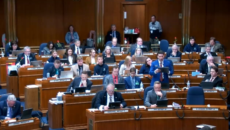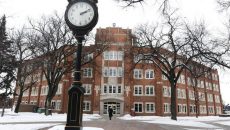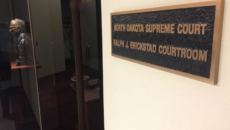When Property Tax Relief Looks Like A 88% Spending Increase
Jack Dalrymple
Governor Jack Dalrymple testified before a joint meeting of House taxation and education committees today in support of his property tax relief bill, and from the details he provided his proposal sure looks a lot like a state take over of most K-12 education spending.
Which is neither tax relief nor the “keep it local” North Dakota voters cast their ballots for when they defeated the measure to abolish property taxes last summer.
“Most state support for North Dakota’s local public schools comes through a grant program,” reports Great Plains News. “The legislation boosts grant spending from about $900 million to $1.7 billion over two years. Aid payments go up to about $9,000 per student.”
Far from tax relief, that sure looks like a 88% increase in state education spending to me. That’s also what this chart of education spending from the Legislative Council shows:

What’s more, Governor Dalrymple’s plan has the state taking over 80% of local education spending. “The governor says if the bill’s approved, it will mean the state is paying about 80 percent of the bills for public school education,” reports GPE. That’s hardly keeping it local, and yet we hear not a peep from the “Keep It Local ND” crowd who opposed abolishing property taxes last year. You’d think they might be worried about what sort of strings might come with the state providing 80% of education funding, but I guess not.
Why would they speak up? That group that opposed Measure 2 was mostly made up of local government special interest groups, and the local governments are making out like bandits. They get a huge windfall in state dollars without any limitations on raising even more revenues through future tax increases. In fact, that was something Governor Jack Dalrymple stressed during his State of the State address at the beginning of the legislative session.
“But any school district that decides they need to levy more mills for any reason will be able as always to ask the electors for more money,” said Dalrymple.
This “property tax relief” is a massive spending transfer from local to state, with nothing to restrain future increases in local property taxes. In the short term this may push the reset button on the property tax problem by buying them down to a lower rate, but long term we’re not fixing that problem. And long term, the state would be obligated to this spending long after these heady days of billion dollar surpluses have come and gone.







